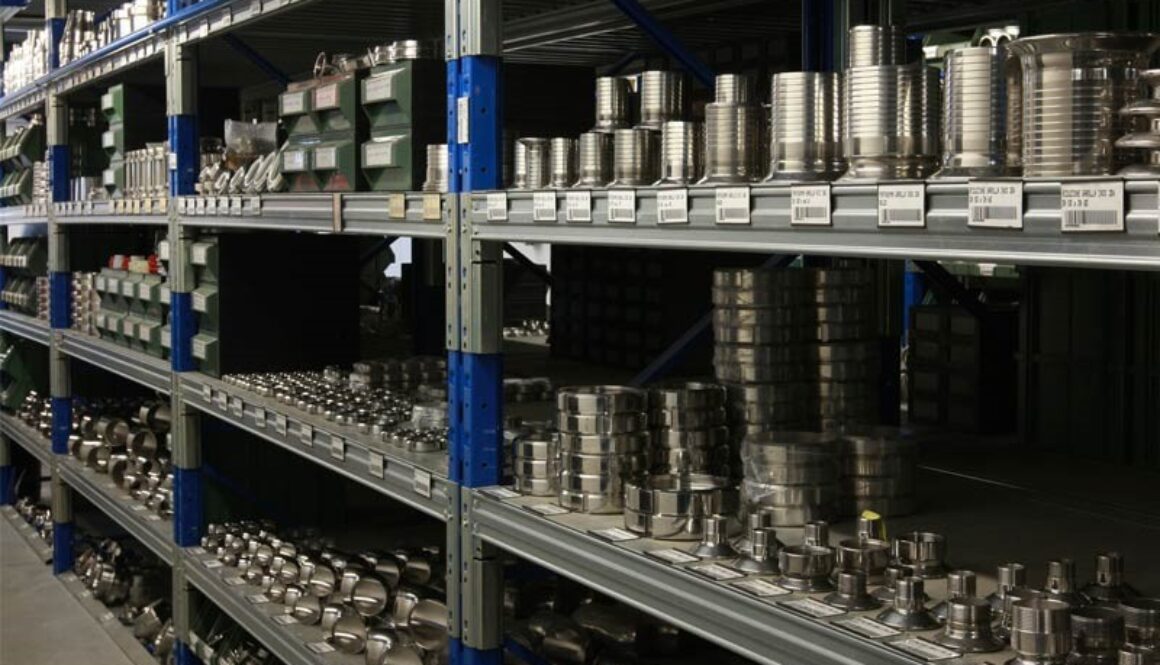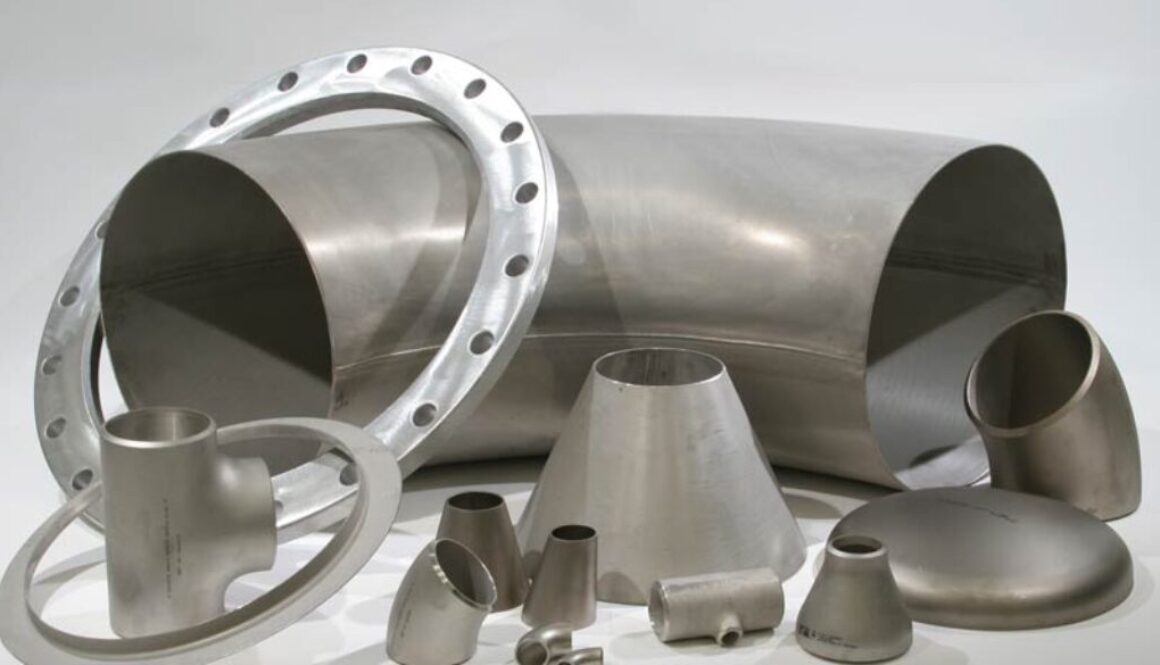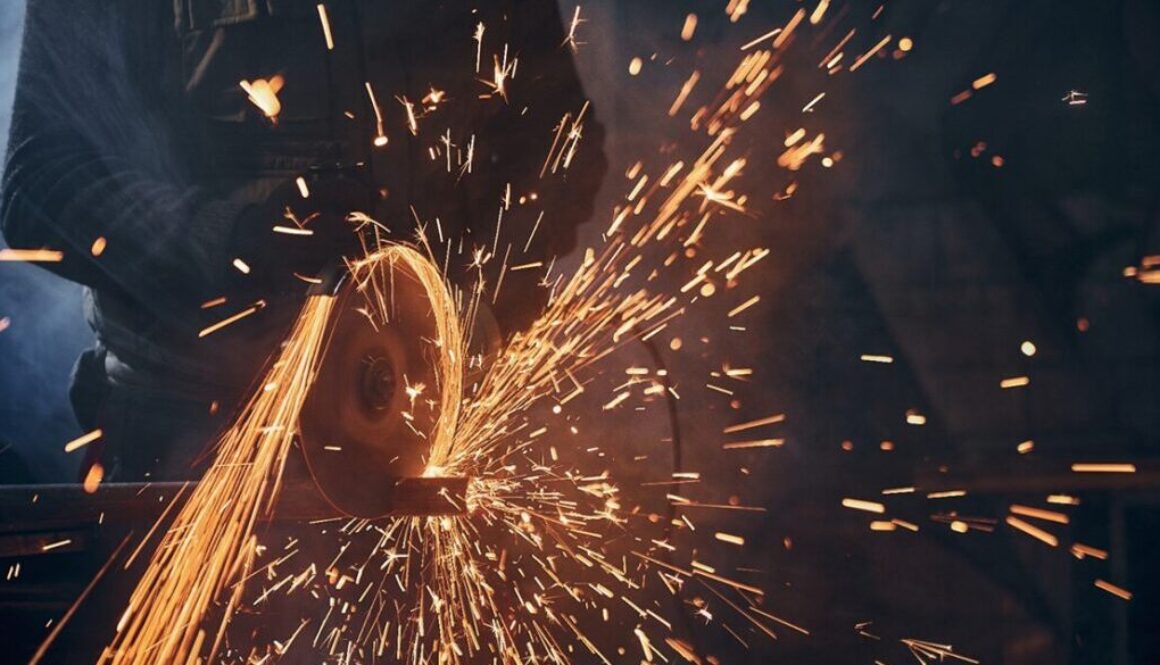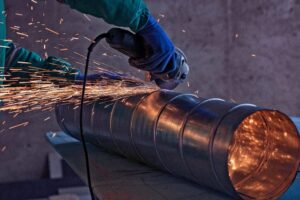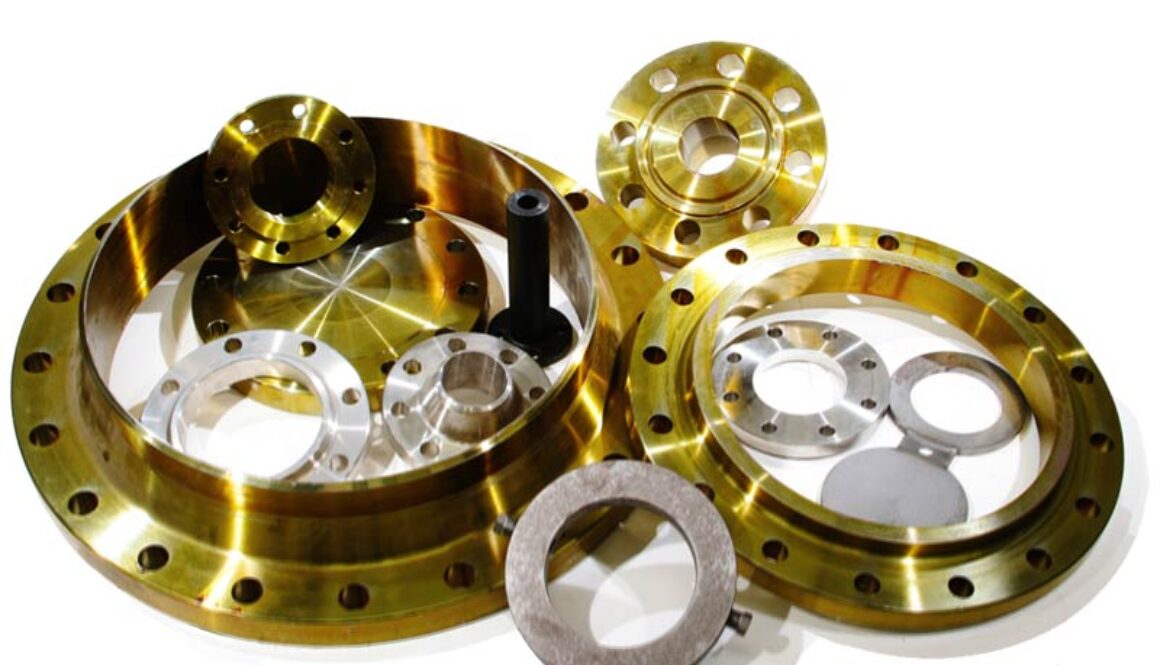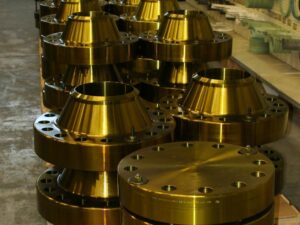Metals for flanges and fittings: the most commonly used
Flanges and fittings are among the most widely used connecting elements in the piping network of a complex industrial system.
However, what are the metals most commonly used in their processing?
Let’s find out together in this article.
FLANGES AND FITTINGS: METALS TO CHOOSE AND PROCESS
The basis of the production of flanges and fittings is always the choice of a particular metal selected for certain characteristics and its subsequent processing.
For fittings, the machining methods are the same as those already seen with the manufacture of flanges:
- investment casting
- welding
We have already seen how, between the two methods, that of welding is preferable, succeeding in preserving certain characteristics of metal integrity.
With regard to hydraulics, the machining of flanges is done based on the pressure rating.
Metals for flanges and fittings: standards and machining
Regarding the machining of fittings, reference is made to a very complicated standard that we could basically summarise as follows.
- BW fittings: ASME B16.9; ASME B16.25; DIN 2605; DIN 2615; DIN 2616; DN 2617; MSS-SP 25; MSS-SP 75; AFNOR NFA49-281; ISO 5251
- Forged fittings: made of forged steel (carbon and stainless steel) according to ASTM/AMS-MSS SP44 international standards and with reference to ANSI B16, 11, B36, 10, BS 3799, MSS-SP83.
- Compression fittings: carbon and stainless steel ogive fittings for high pressure, with reference to DIN 2353 standards from D. 6mm to D. 28mm
As for flanges, the main standards to be followed are.
- ASME B16.5/16.36/16.47;
- UNI
- DIN
- BD
- EN 1092
What is certain is that for flanges and fittings, given the wide range of uses, it is necessary to make a judicious selection of metal, based on specific characteristics.
But how does this selection take place? Aren’t you curious to know?
METALS FOR FLANGES AND FITTINGS
Although the field of flange and fitting processing has undergone major changes – especially the contribution of new technologies – one thing has not changed at all: the processing material used.
Metals continue to be used to make finished products.
Yes, this has not changed: since the first industrial revolution and even since the Iron Age, when various metals were used in the production of tools and weapons for hunting.
If we try to think of a metal, we can only imagine it as a processed product, ignoring all the selection and optimization aspects that lead to the definition of that product.
The use of metals, however, remains preponderant.
However, how to choose the most suitable one?
The choice of metals for flanges and fittings is based on a few criteria
There are many characteristics that need to be evaluated in selecting the most suitable metal for flanges and fittings.
The choice of one or the other metal responds not only to the peculiar characteristics of the metal itself, but mainly starts from the final product.
Specifically on how this should be machined and sometimes notched.
The most important characteristics are as follows:
- Malleability: for a metal to be considered malleable it must retain intact structural characteristics in the face of excessive force or pressure. In essence, it must not exhibit fracture or physical transformation. This is something to consider when the flange or fitting is intended for very harsh environments.
- Hardness: this refers to the ability of the metal not to deform as a result of strong pressure applied.
- Electrical conductivity: this refers to the metal’s ability to conduct electricity.
Given this, we come to evaluate the most suitable metals for machining flanges and fittings.
METALS FOR FLANGES AND FITTINGS: STAINLESS STEEL
One of the most widely used not only in the manufacture of flanges and fittings, but throughout the world of industrial equipment.
The name stainless is due to the property, not found in other types of steel, of not rusting when it comes into contact with oxygen.
This characteristic is mainly due to the nature of its alloy, which consists of iron and chromium.
Through a chemical process called passivation, chromium draws a very thin oxide coating, which resists oxidation.
This property was discovered by Harry Brearly from Sheffield, England, while he was experimenting with new steels for firearms.
Coming to the characteristics, this metal has a high resistance to corrosion, especially in contact with fresh water and moist air.
The metal has the shortcoming of notwithsta nding scratches and extreme conditions, especially when prolonged over time.
VARIOUS TYPES OF STAINLESS STEEL
There are several varieties of stainless steel, more than 100 different grades; and these are classified into five main types.
- Austenic: This is definitely the most widely used, given its resistance to heat and high temperatures. Used widely for household purposes, shipbuilding, architectural construction and industrial piping. The main types are 304/304L/304H, 316/316. L/316H/316T/A182/F321/312H/321H/A182/F347/A182/F347/A182 F44/A182 F904 L/F310S
- Ferritic: has properties very similar to mild steel, but with better resistance to corrosion and cracking. It is ideal for boilers, indoor architecture, and washing machines. Some examples: AISI 409, 430m 444.
- Martensitic: Very strong and durable type of stainless. Although not as corrosion-resistant as its austenitic counterpart, it is perfect for products such as turbine blades and knives (AISI 400 group)
- Duplex: Composite of ferritic and austenitic steel. Excellent for those who need a metal that is both flexible and durable. It is the most common metal for those working within the paper, shipbuilding and pulp industries because of its wide range of properties. Example: UNS S32202;
- Semi-austenic steel: also called precipitation hardening, it is exceptionally strong because it has the alloying elements aluminium, niobium and copper added in fusion with it.
Metals for flanges and fittings: carbon steel
Carbon steel is denoted by the symbol CS (carbon steel).
It occurs as an alloy with carbon percentages not exceeding 2.1%.
Above this percentage, the properties of the metal are not the same.
It is currently the most widely used metal: used both in everyday tools and in complex elements of precision mechanics.
It comes across as very easy to machine, reliable and cost-effective.
They are classified on the basis of several criteria.
The most common one, however, relates to the percentage of carbon:
- Low carbon content: up to 0.3 percent;
- Medium content: between o.3 and 0.6 percent;
- High-content: above 0.6 percent,
Main alloys:
- A-105 B- 350 LF2, for flanges and flanged fittings;
- WPB,WPL6,WP11, for bw fittings.
Metals for flanges and fittings: cast iron
This metal is also used in the production of flanges and fittings; however, it is often debased and downgraded.
A fact mainly due to its low quality and difficult workability compared to common iron.
It has a higher specific gravity and also has high electrical conductivity.
Metals for flanges and fitting: bronze
The most common alloy is the one composed of copper and tin; but there are others made from metals such as beryllium, aluminium, and nickel.
The classic alloy -B 14-, however, turns out to be more widely used in machining.
Used obviously for flanges and fittings; but also for bushings, bushings and any other mechanical component that needs it.
Compared to steel, it comes across as less durable; but it boasts a higher resistance to corrosion, especially when it comes to seawater.
It also stands out as the most reliable conductor of heat and electricity.
Metals for flanges and fittings: copper
Copper has the characteristic of being perpetually recycled, keeping its characteristics intact.
It oxidises very slowly and offers itself as particularly malleable.
With its excellent conductivity, it is one of the most widely used metals for pipes and electrical cables.
Metals for flanges and fittings: brass
Composed of an alloy of copper and zinc, it comes in a bright, golden colour.
Compared to bronze, it shows itself to be cheaper, but more difficult to work with.
As far as pipe joining is concerned, it is easily used for machining screws and bolts.
Having antibacterial properties, it is also among the most recommended metals for frequent fixings and remodelling, and also for creating door and flap handles.
PANTALONE’S FLANGES AND FITTINGS
Now that we have taken a closer look at the most commonly used materials for flanges and fittings, how would you like to take a look at our catalogue?
The Ukrainian crisis is causing enormous difficulties in procurement and with the increase in raw material prices, which is why we at Pantalone are doing long-term planning to increase our warehouse inventories, this way we remain competitive in the market and with a large stock of materials.
We handle two product lines for both stainless steel and carbon steel, we can supply products of European origin or non-European origin from stock.
Contact us for a quote and put us to the test.
Visit our website to find out more

